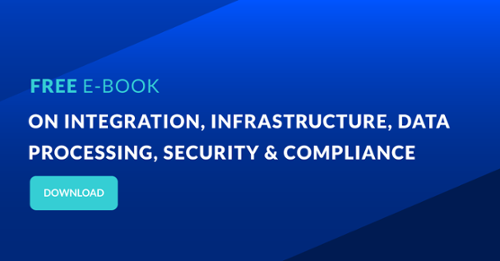Nowadays with the wide use of the Internet on a daily basis, all kinds of cybersecurity risks have come and gone. Their severity ranges from minor to extremely harmful, which makes cybersecurity an issue of great importance. Malicious attacks will remain as long as the Internet does. Nevertheless, there are a great deal of security risks that are recognizable and avoidable. In this article, we are going to present the most common cybersecurity risks and how to tackle them.
Software as a Service (SaaS) companies have undergone a large growth in recent years. The usage of SaaS platforms is certainly advantageous and immense; however, like in real life, the Internet poses security threats.
In the past years, security concerns for SaaS companies have increased immensely. Although it is important to focus on scaling and growing their user-base, the businesses should prioritize safeguarding their customers’ data and ensuring cybersecurity.
List of biggest cybersecurity risks for SaaS providers
Malware and Ransomware
The most abundant and widespread cybersecurity threat is malware. It occurs when unwanted software installs itself on the target system, triggering uncommon, strange behavior. The threat can range from rejecting access to programs, erasing files, data theft, and spreading itself to other systems.
Ransomware is currently considered the most troubling threat. Ransomware is a foul form of malware that installs itself on a user's system. It impedes access to functionalities until a ransom is paid to a third party. Consequently, the computer may be locked, or the data on it might be deleted, encrypted, or stolen. It is also common that ransomware spreads to other machines.
In order to unlock your machine, you must pay a ransom, which is typically requested in cryptocurrency. Nowadays, as companies have started to focus on building stronger protections to shield from ransomware breaches, some experts believe hackers will progressively target other potentially profitable ransomware victims such as high-net-worth individuals.
Advice:
To mitigate this cybersecurity threat, for example, make sure to always have a recent offline backup of your most important data and files. Law enforcement does not encourage, approve or accept the payment of ransom demands.
You should be aware that if you pay the ransom there is no assurance that you would recover access to your data or machine, your computer would still be infected, and you could become a potential target in the future. Businesses should take actions to minimize the consequence of data extraction.
Phishing Risks
Phishing scams are an old attack that depend on social engineering to accomplish their objective. Usually, the end user receives an email or message that demands sensitive data, like a password. The phishing message often seems official, using what appears to be valid credentials. This coerces the user to click on links and inadvertently expose sensitive information.
Phishing emails can impact a business of any type and size. They can reach millions of users directly, and the attacks can install malware (such as ransomware), sabotage systems, or steal intellectual property and money.
Nowadays, when employees at most organizations are more aware of the dangers of email phishing, hackers are adjusting and improving their attacks — for example, using machine learning to swiftly establish and distribute persuasive fake messages in the hopes that end users will inadvertently compromise their organization’s systems and networks.
Advice:
The National Cyber Security Centre recommends taking a multi-layered approach. Merely depending on employees being able to spot phishing emails is a method with little success. Experts recommend broadening your protection and security measures:
- Firstly, make sure to create obstacles and make it hard for attackers to reach your users.
- Secondly, facilitate and assist users in recognizing and reporting supposed phishing emails.
- Lastly, take extra measures to safeguard your business from undetected phishing attacks, and make sure to address threats quickly.
Data Breaches
Data breaches continue to be one of the top cybersecurity threats, considering the extensive damage they cause to companies in repairs afterwards. Security and data breaches are cybersecurity threats that organizations face every day.
To ensure that your SaaS supplier can alleviate and overpower data and privacy breaches, make sure to investigate whether their security team is equipped to tackle a cyber-attack. Ensure that in the event of a security breach, your provider can properly identify the threat and take proper measures to resolve the issue(s). While user experience may be compromised, encryption is still an advisable way of safeguarding sensitive data from data breaches.
To resolve the security issues listed above, SaaS companies should strengthen and upgrade their existing security practices and establish new ones as the SaaS environment is constantly advancing. Backing up your data is an essential step that would help you in case of an emergency and security breach.
One of the most crucial things you and your company can do is obtain an ISAE 3402 or 3000 report, which is a non-biased approval of data handling. This guarantees that your cybersecurity procedures are in accordance with accepted standards, both for internal and external users.
Security Awareness
The absence of a formal security awareness program for all users of a SaaS application can result in an instance where your data is exposed to a ton of security risks, like social engineering attacks, phishing scams, inadvertent leaks of confidential data, and more. Arranging security awareness campaigns for your organization would help prevent the occurrence of security accidents and cyberattacks.
Implementing a formal security awareness program is crucial in today's rapidly evolving cybersecurity landscape. It is no longer enough to rely solely on technical security measures; organizations must also focus on educating and empowering their employees to become the first line of defense against potential threats.
A comprehensive security awareness program should include regular training sessions and workshops that cover a wide range of topics, such as recognizing and reporting phishing emails, understanding the importance of strong passwords, identifying social engineering tactics, and practicing safe browsing habits. These sessions can be conducted in various formats, including presentations, interactive workshops, and online modules, to cater to different learning styles and preferences.
Remember, cybersecurity is a shared responsibility, and every employee has a role to play in maintaining a secure environment. With a strong security awareness program in place, organizations can empower their employees to become active participants in the fight against cyber threats and ensure the overall safety and resilience of their digital infrastructure.
Risk Assessment
In the event that one application or machine in your company exposes you to cyber risk, then all other machines and applications connected to it will get ‘infected’ as well. For this reason, you must assess the security risk of every program, application, and machine that you use. You need to test and verify everything from risk configuration of an application to their compliance with standard security protocols and control admission credentials for any unusual occurrences.
Cybersecurity risks continue to develop in complexity. Understanding them and establishing appropriate safety practices is an excellent way to properly safeguard your networks and systems, thus, providing security for your workplace environment. In AskCody, we do so by regularly complying with international safety regulations. We have obtained an ISAE 3000 report and are protected against OWASP Top 10 security risks.
Conclusion
In conclusion, cybersecurity risks are a constant concern in today's digital landscape, particularly for SaaS providers. Malware and ransomware pose significant threats, and it is crucial to have offline backups and avoid paying ransoms. Phishing scams continue to evolve, highlighting the need for a multi-layered approach to security. Data breaches can have devastating consequences, so it is essential to choose a SaaS provider with robust security measures in place.
Security awareness programs and risk assessments are vital tools in mitigating cybersecurity risks. By staying informed and implementing proper safety practices, organizations can protect their networks and systems.
Engaging further with this topic through education and staying up to date on the latest cybersecurity practices is essential for ensuring the safety of businesses and individuals in the digital age.




